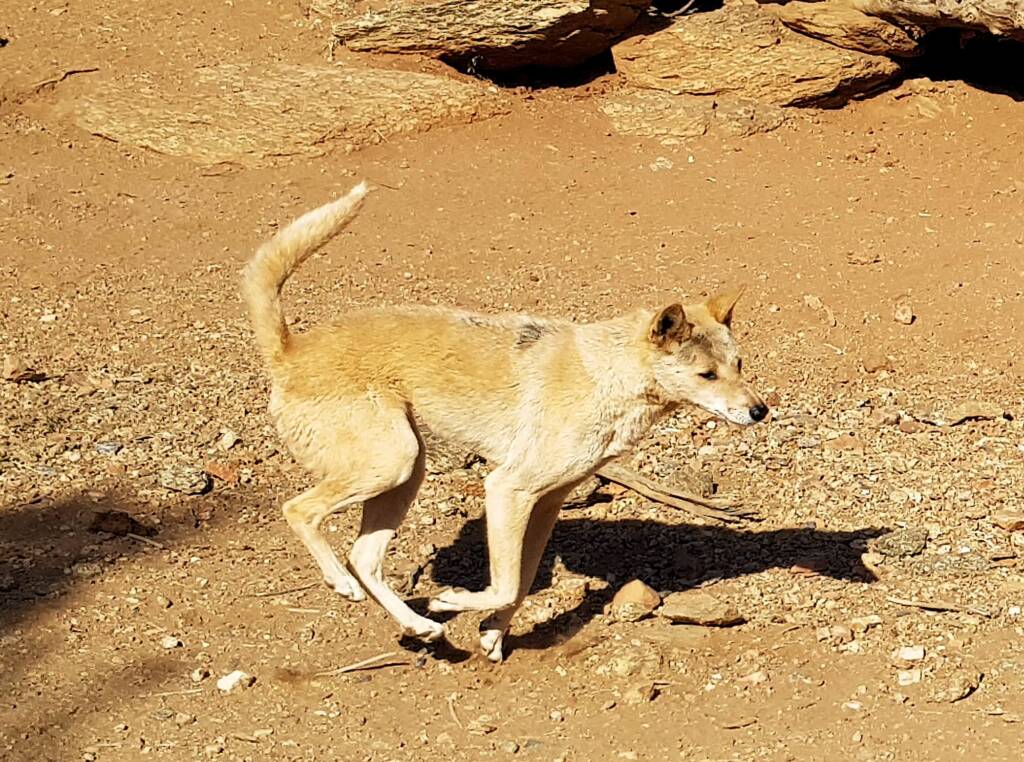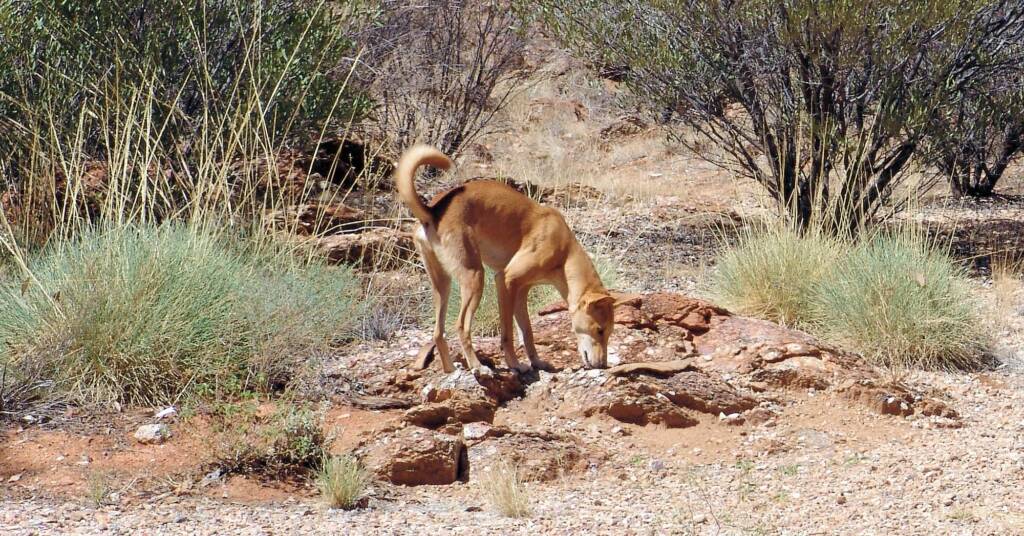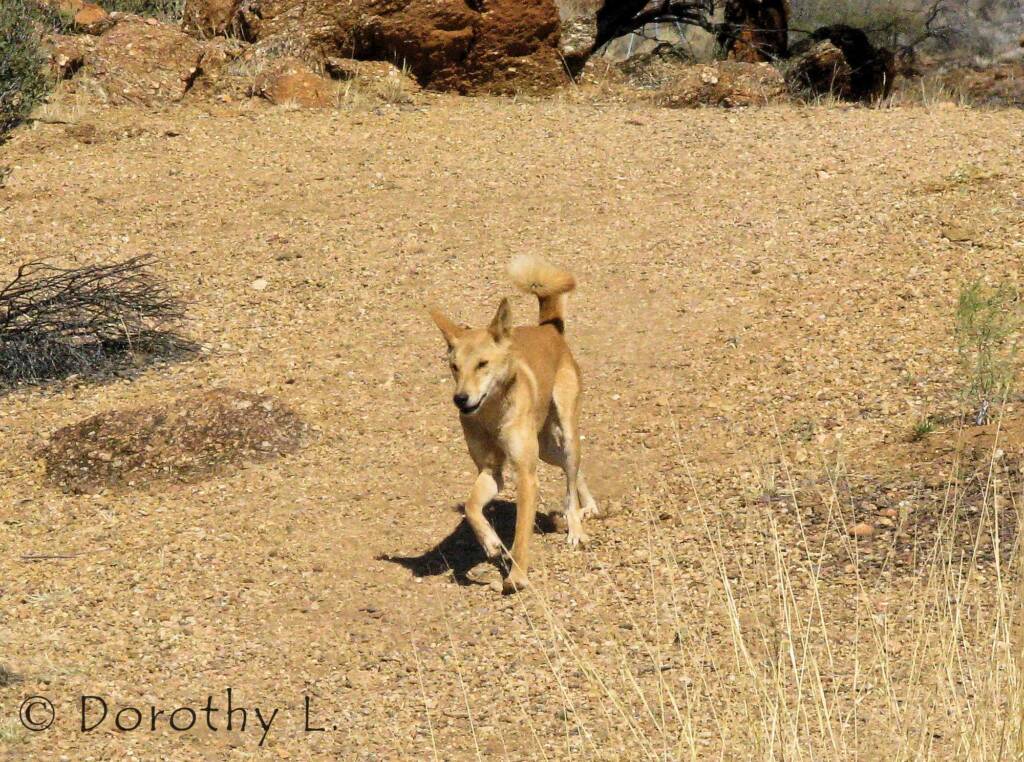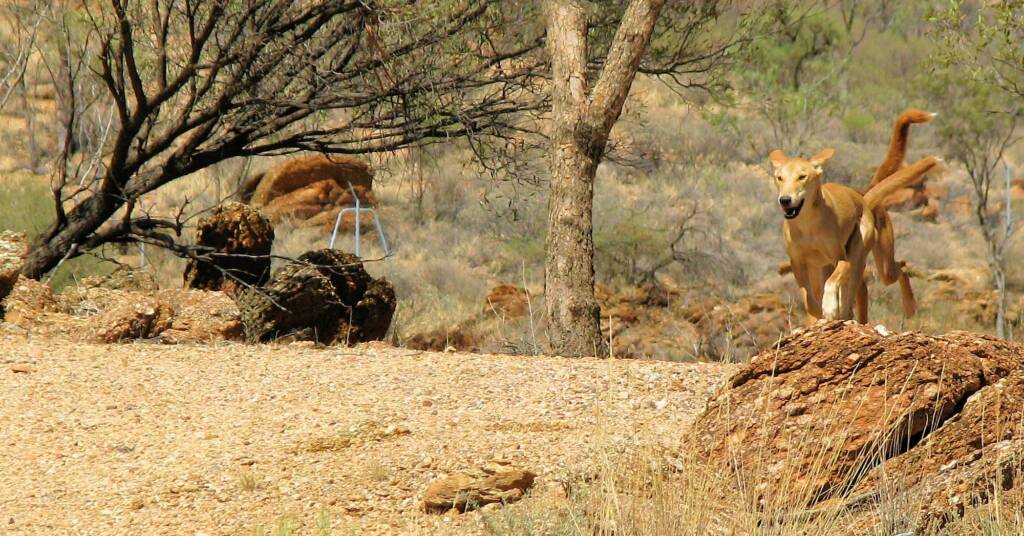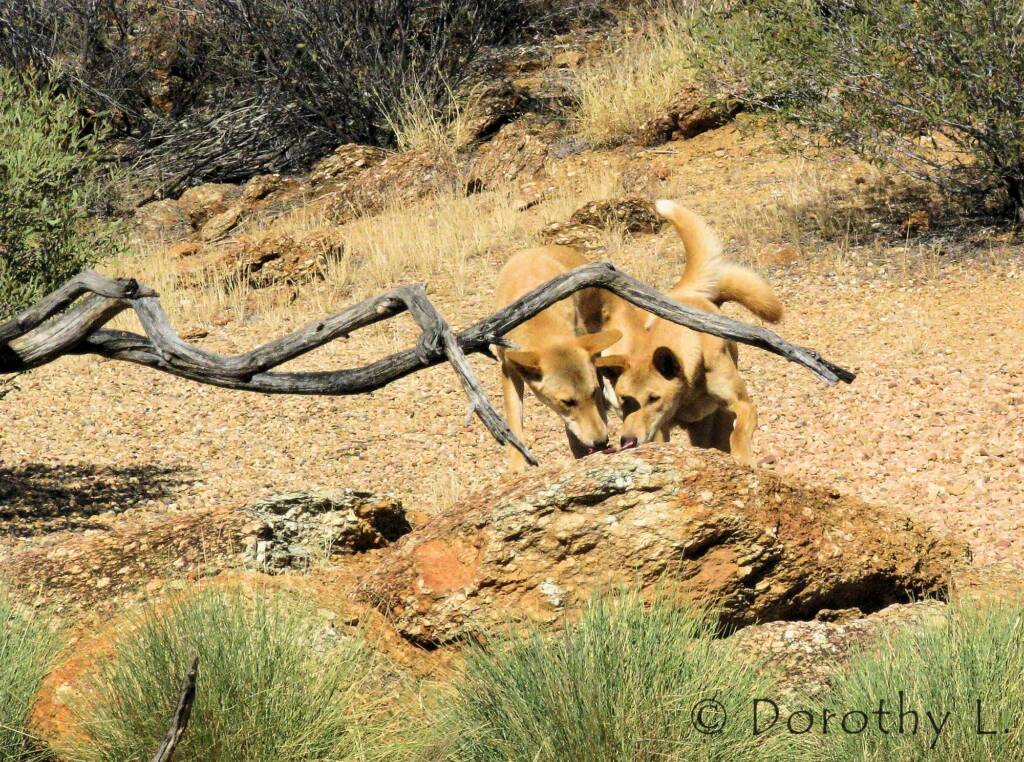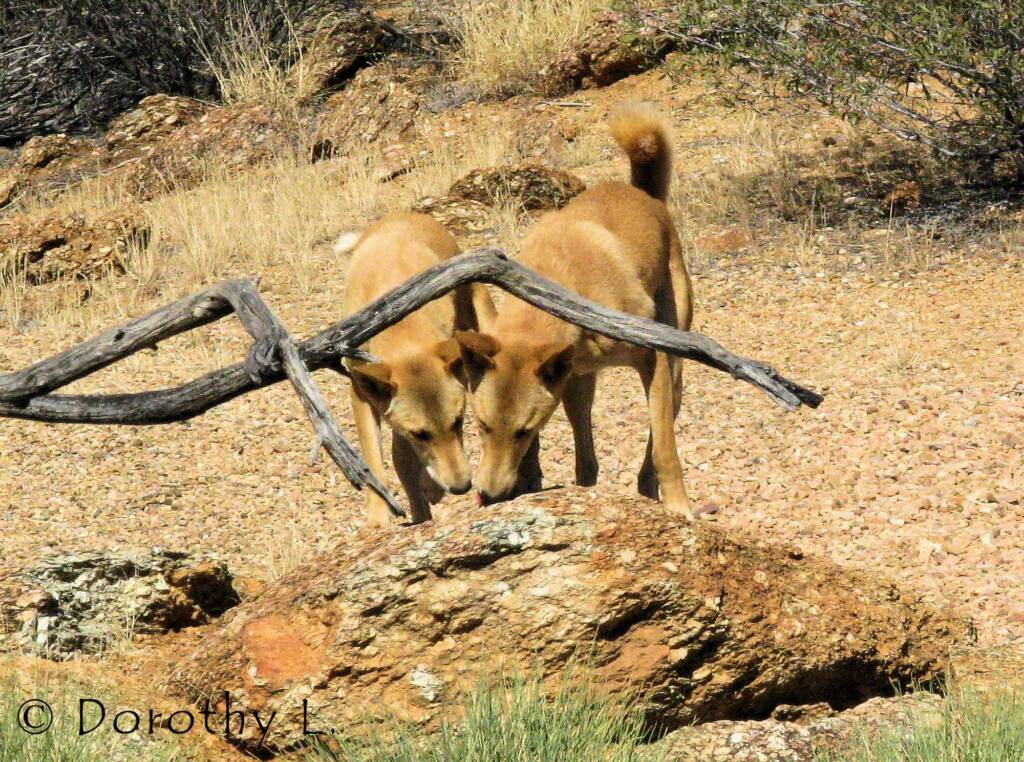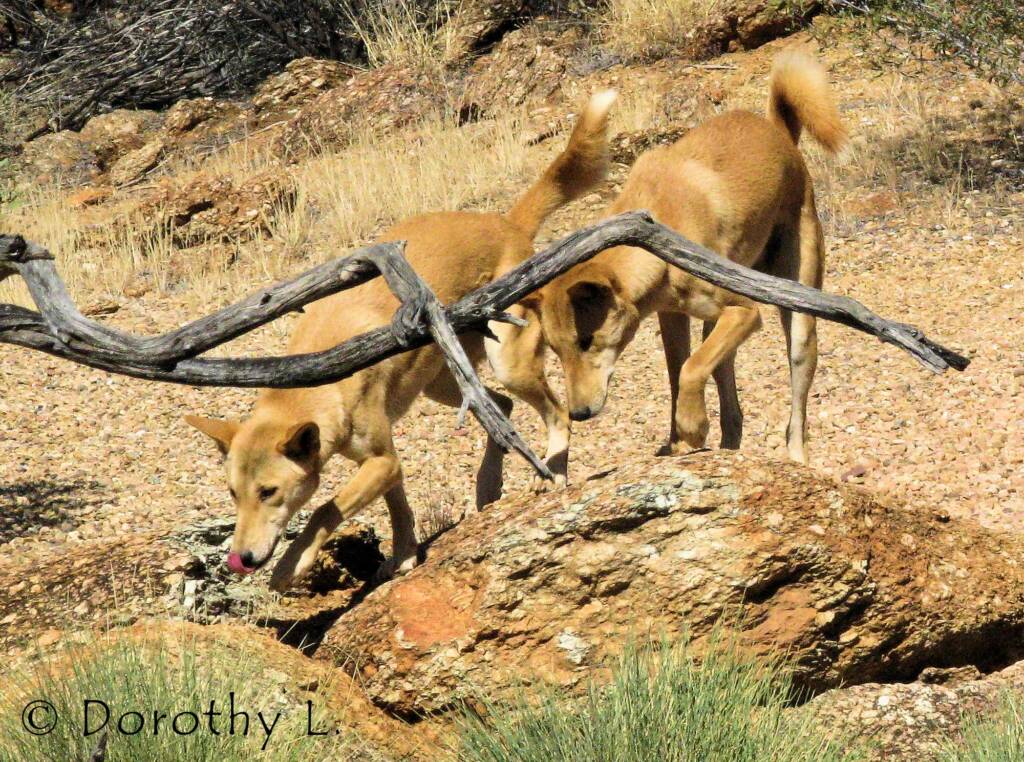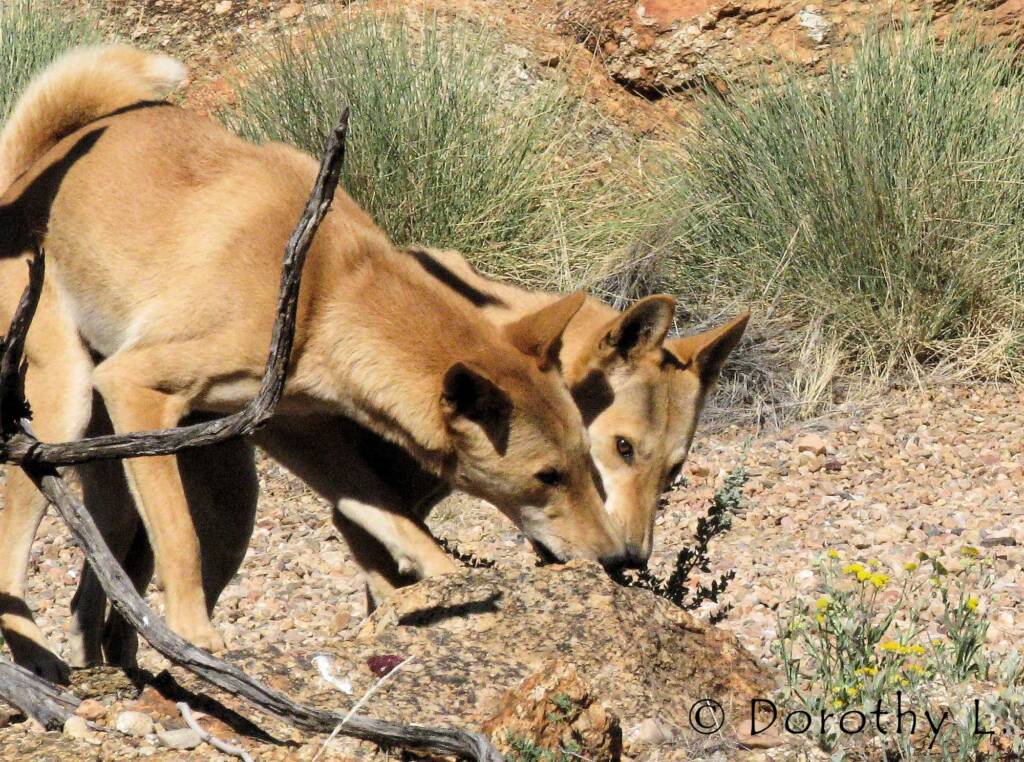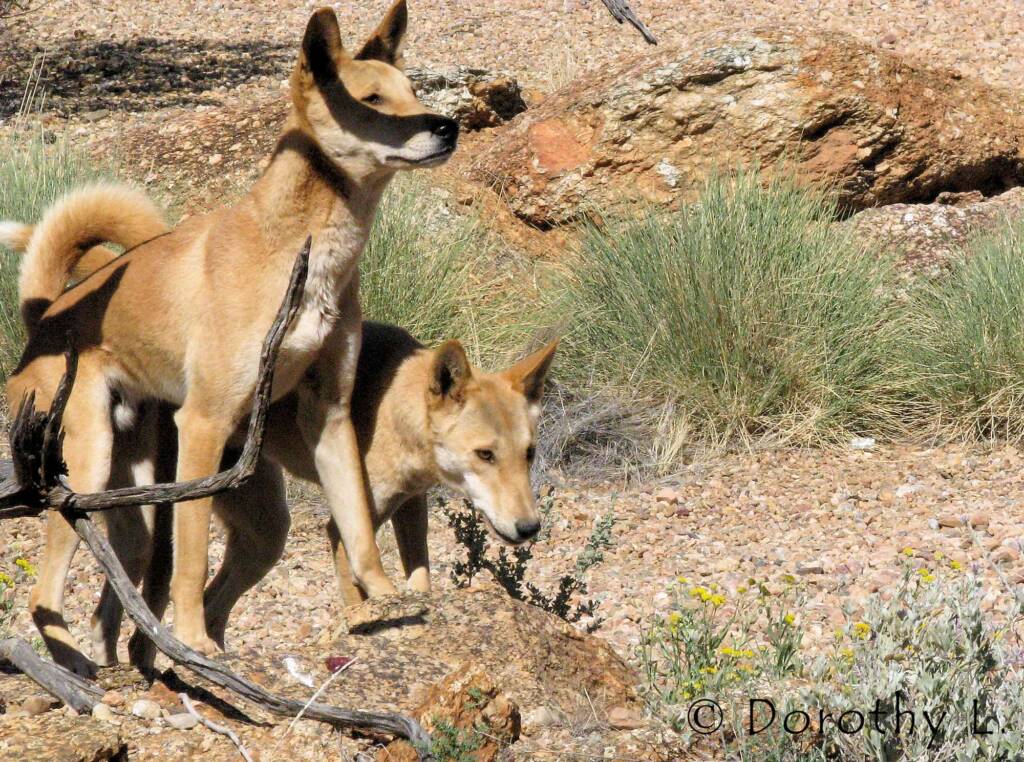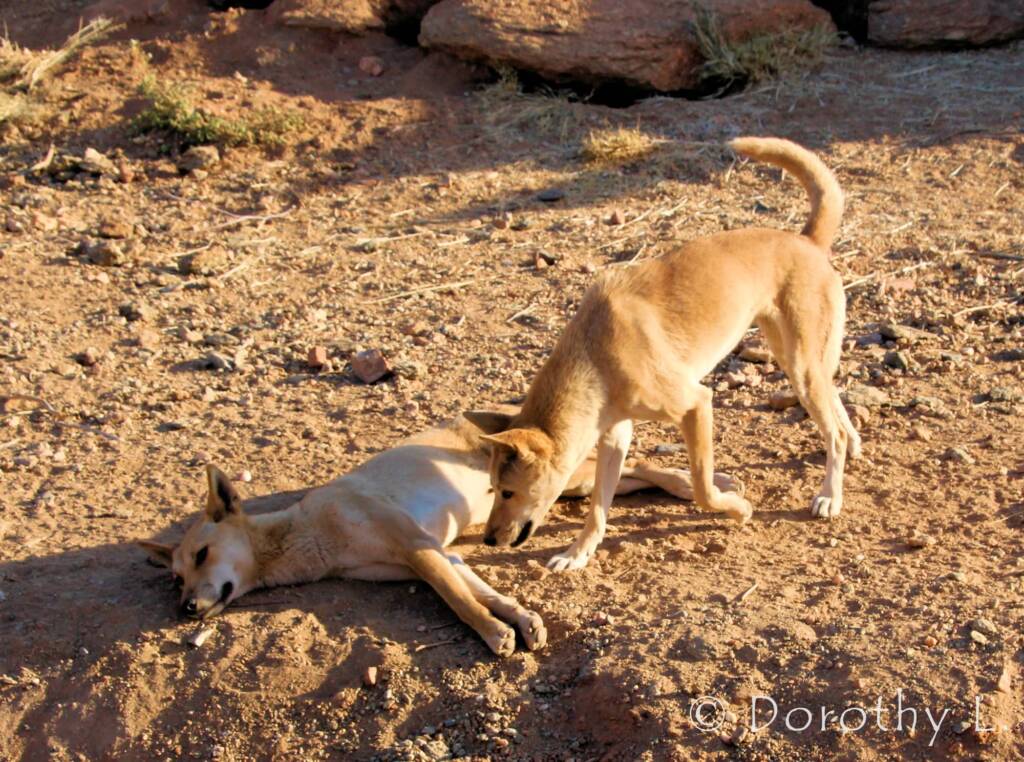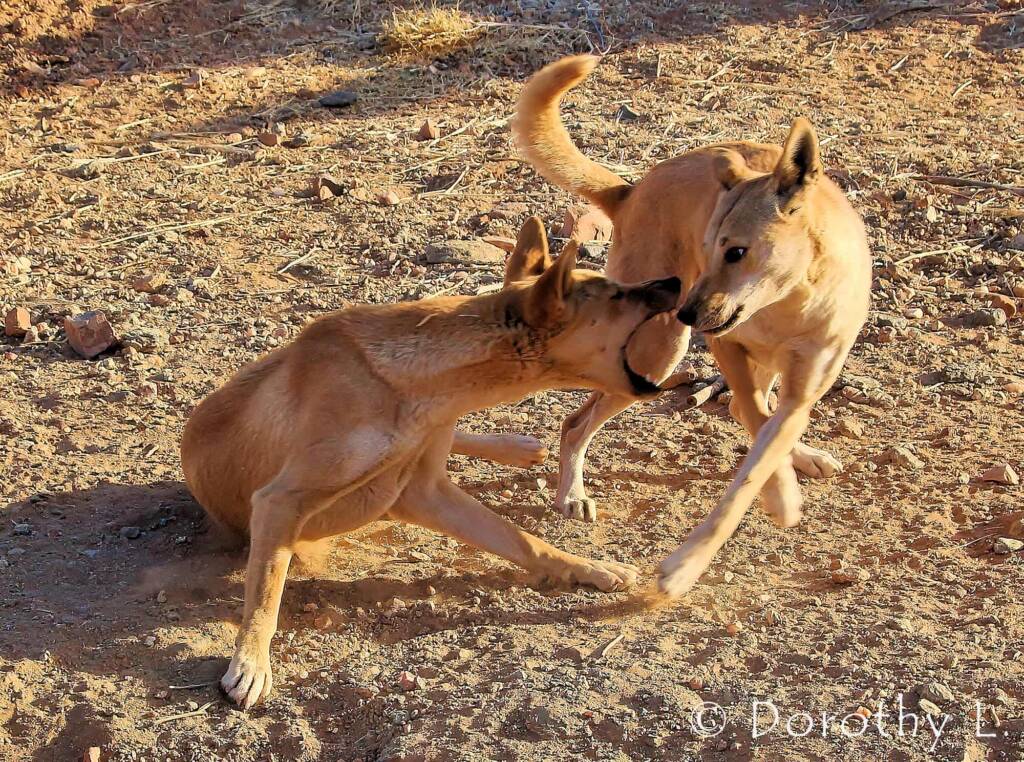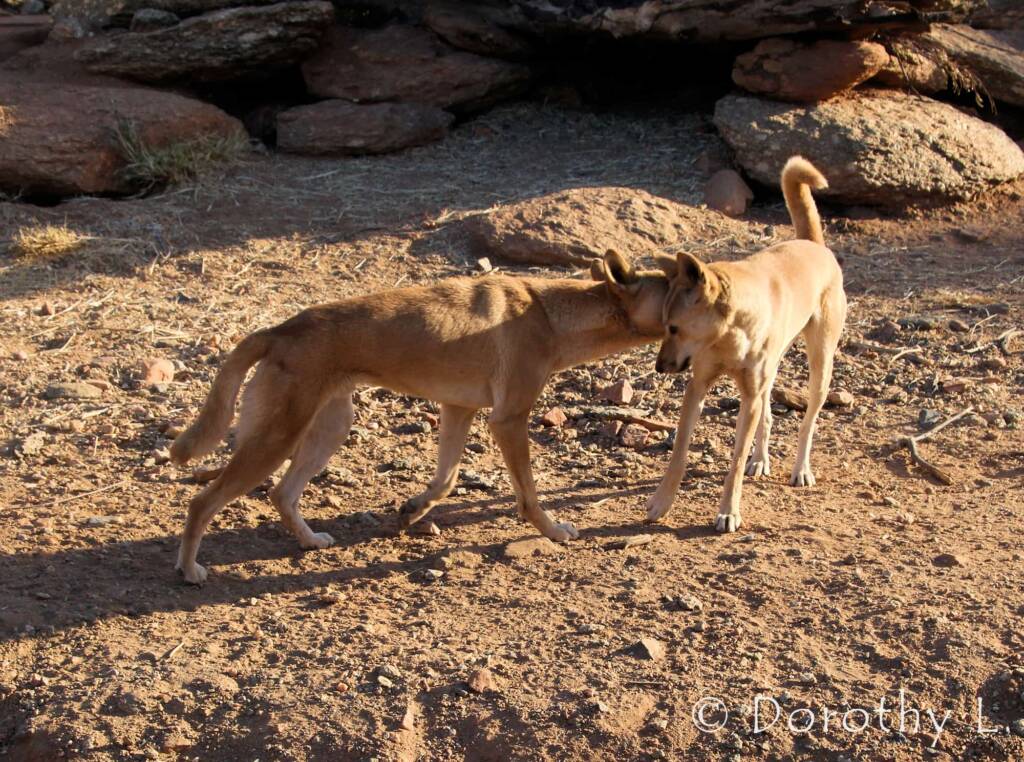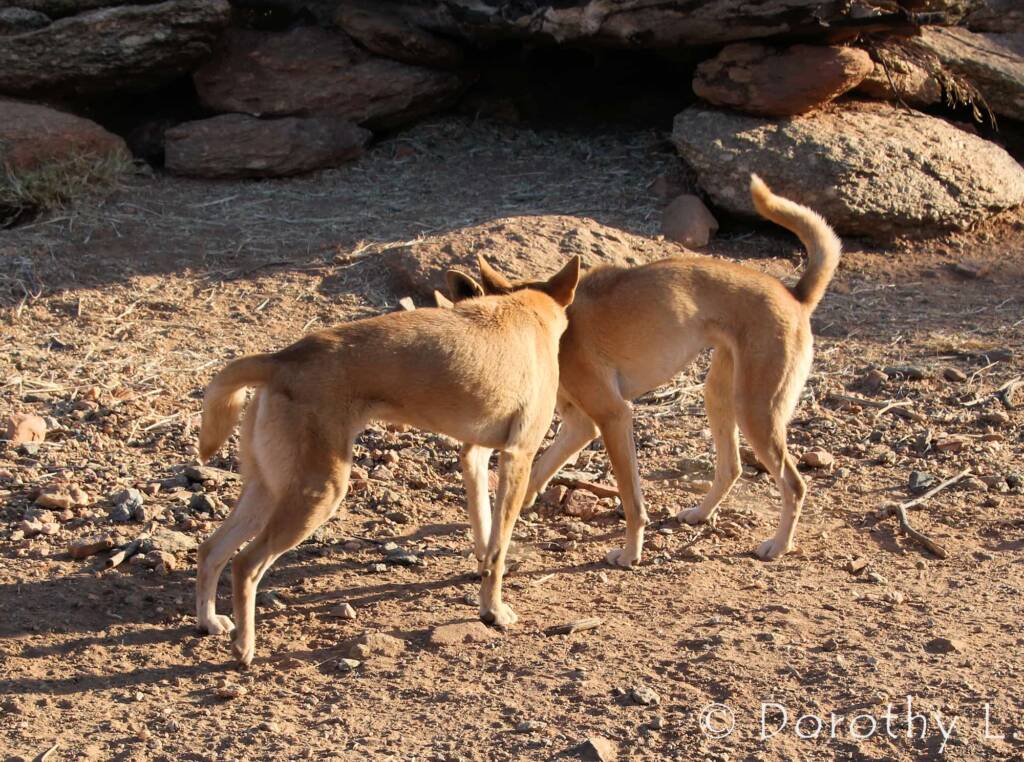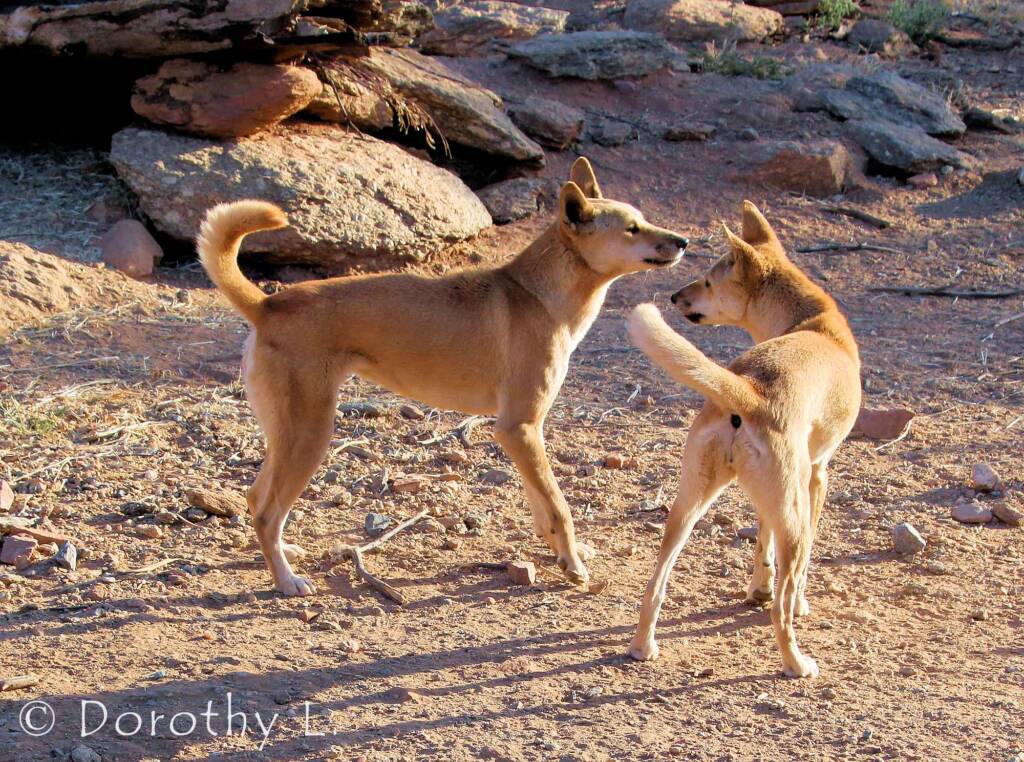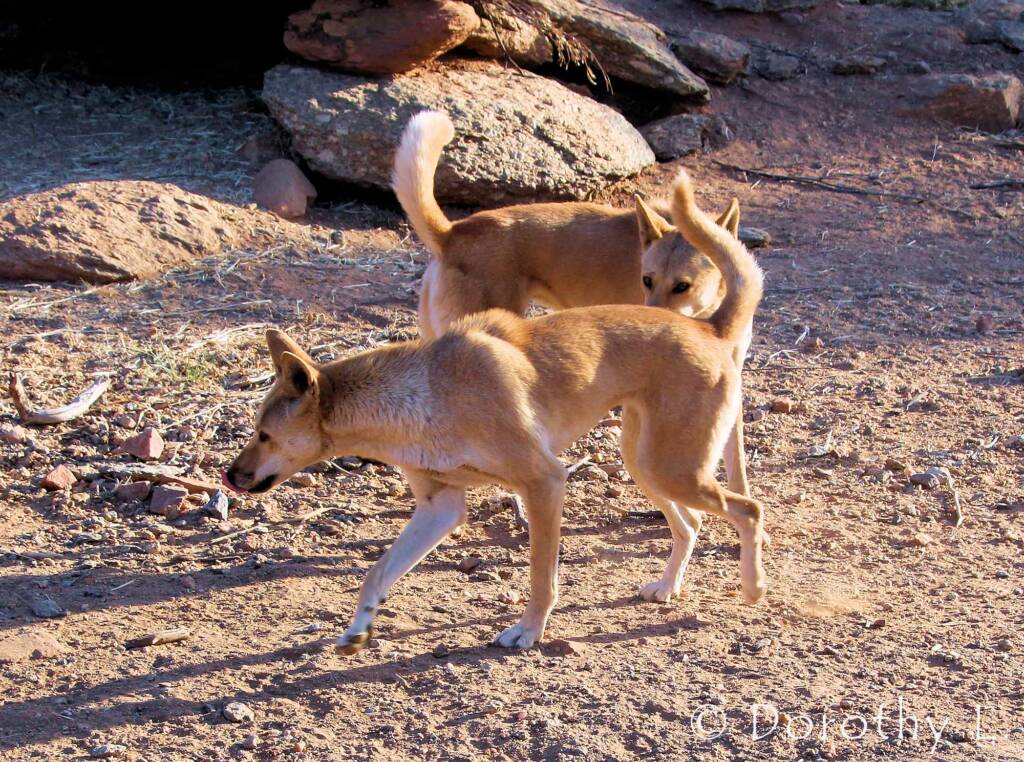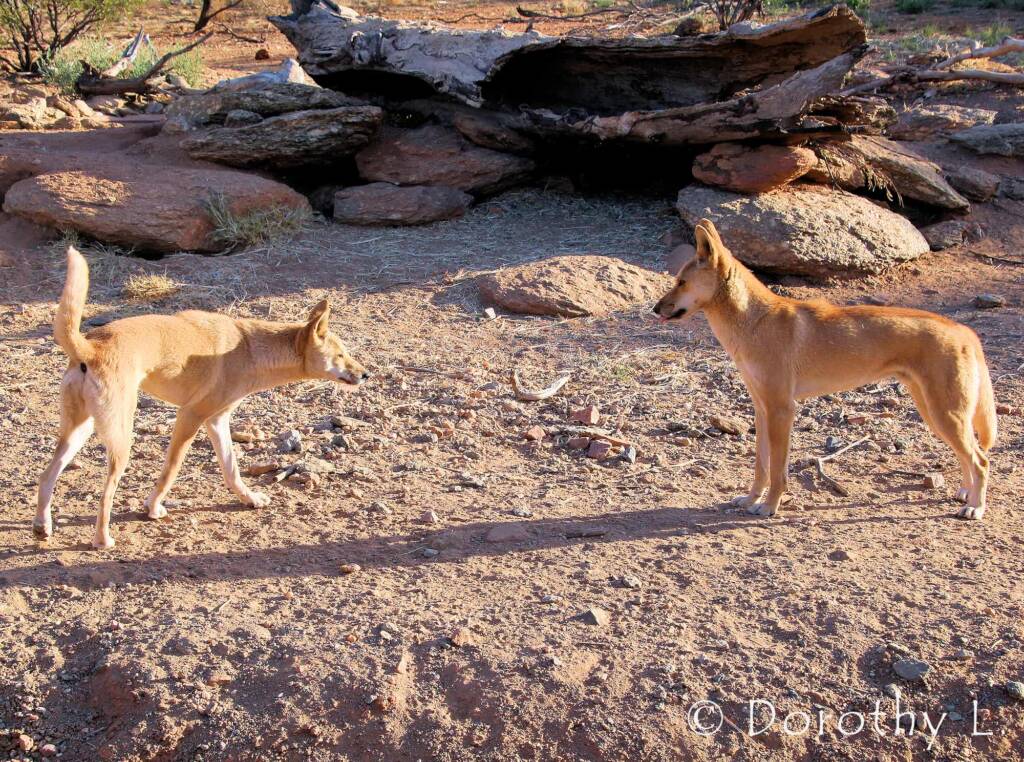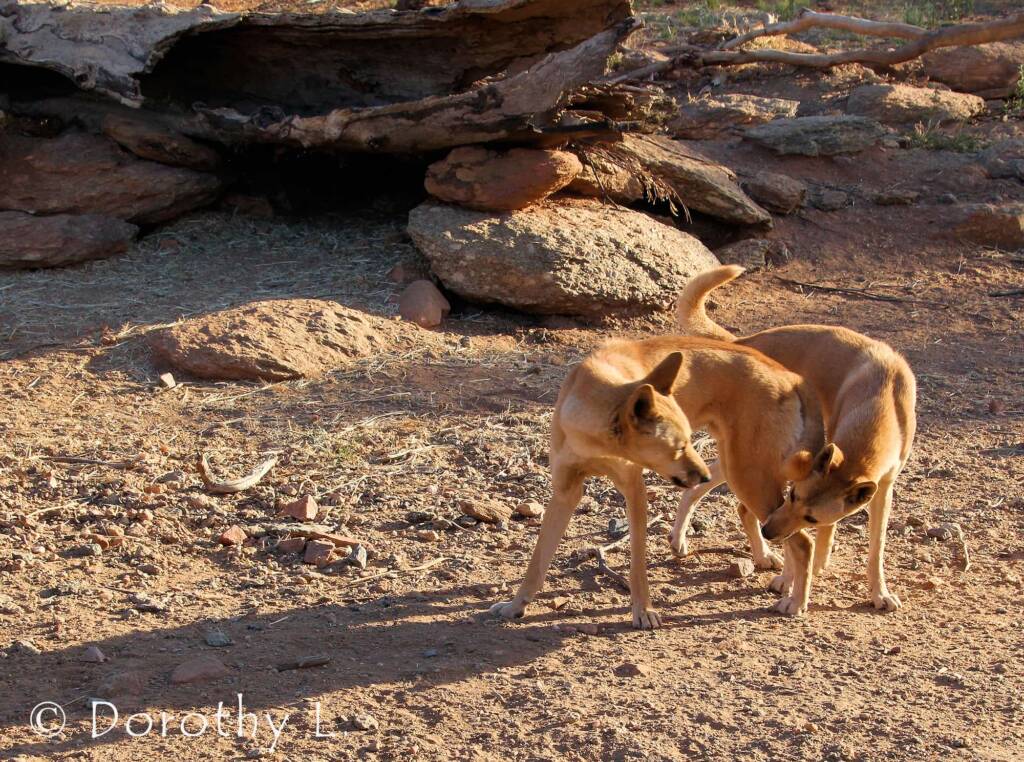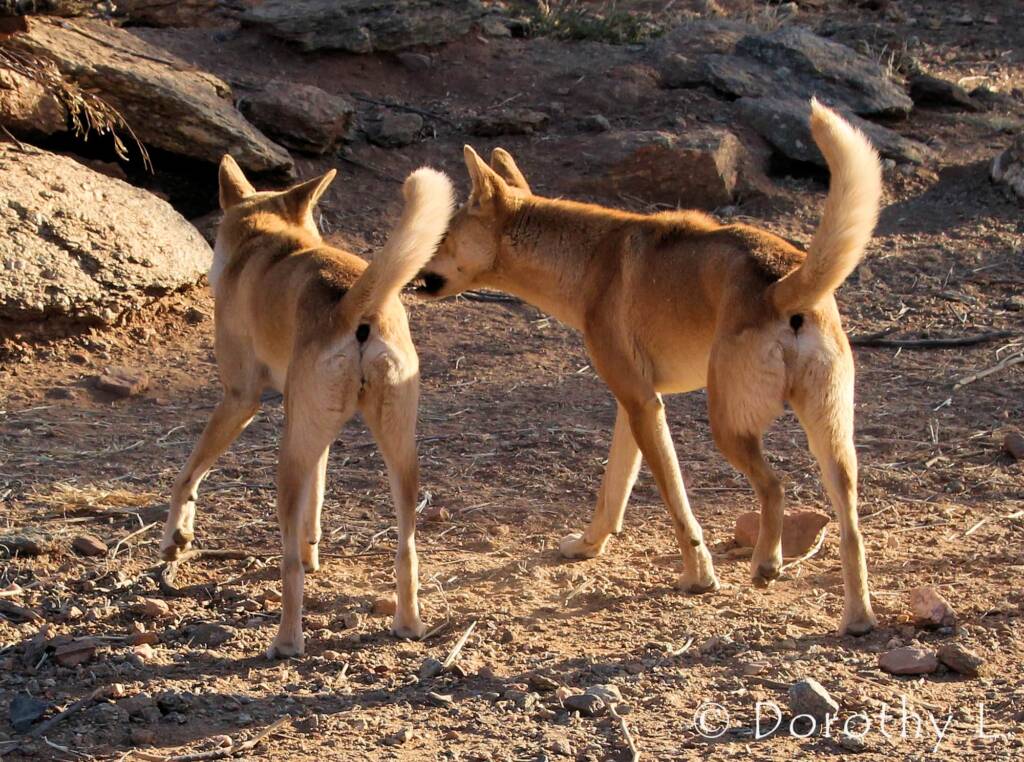Alice Springs Desert Park
ASDP Home | Fauna | Flora | Nature Theatre | Nocturnal House
Australia’s iconic Dingo (Canis dingo, Canis lupus dingo) belong to a group of “dogs” characterised by short coats, erect ears, a characteristic skull shape and teeth. a distinctive trotting gait. The coloration of their coats are typically ginger, although some may be red-yellow, sandy-yellow, and on occasion black and tan. Most dingoes have white markings on their feet, tail tip and chest, occasionally you may see some with black markings.
Unlike domestic dogs that breed twice a year, the wild dingo breed once a year. The females usually come on heat for a few days during the middle of the year, the pups being born nine weeks later.

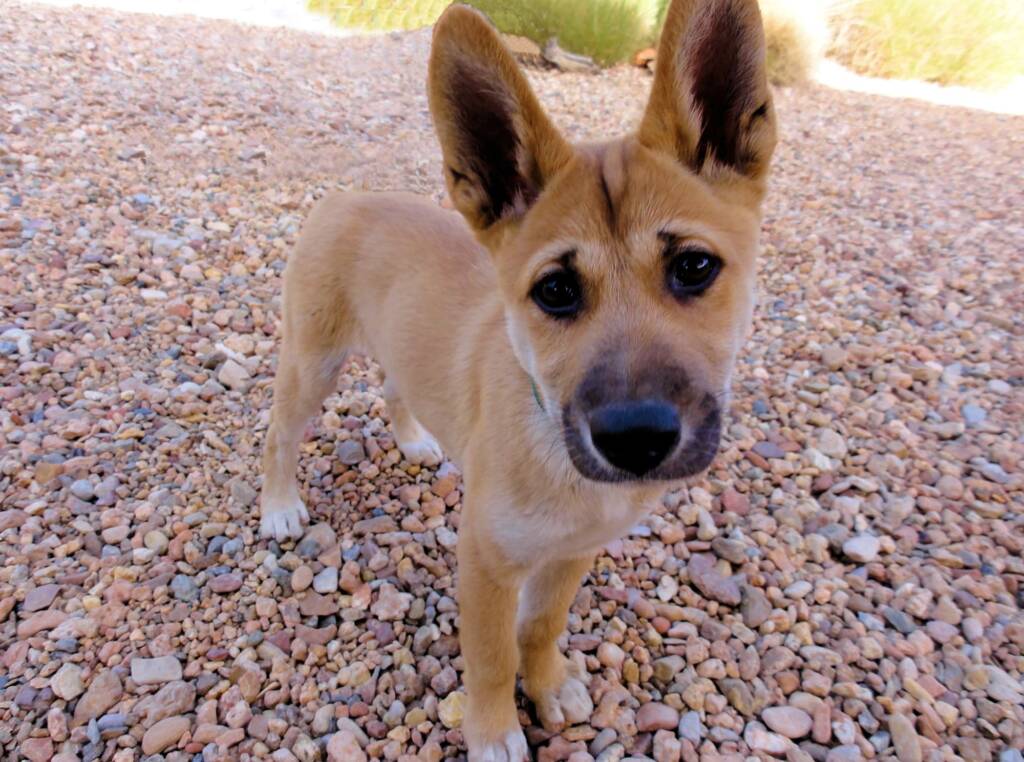
Dingoes are known to eat a diverse range of prey items including rabbits, rodents, lizards, insects, kangaroos, wild cats and pigs. The young dingoes are prey for wedge tailed eagles.
Dingoes communicate long distances by howling, although they have been known to bark. They have three different types of howls – moans, bark/howls and snuffs. Howling is used to communicate to pack members and to repel rivals.
Whilst dingoes may appear solitary, often seen alone, many do belong to packs that socially interact with each other.
More information about the dingo can be found in our Fauna section.
Images © Dorothy L / Images © Ausemade PL
- Scientific Classification
- Kingdom: Animalia
- Phylum: Chordata
- Class: Mammalia
- Order: Carnivora
- Family: Canidae
- Genus: Canis
- Species: C. lupus
- Subspecies: C. I. dingo
- Trinomial name: Canis lupus dingo
- Synonyms: Canis dingo
ASDP Quick Link: Home | Fauna | Flora | Nature Theatre | Nocturnal House
ASDP FaunaASDP Arachnida ASDP Birds ASDP Insects ASDP Reptiles Dingo Ghost Bat Greater Bilby Numbat Red Kangaroo Short-beaked Echidna Spinifex Hopping Mouse Thorny Devil Western Quoll

